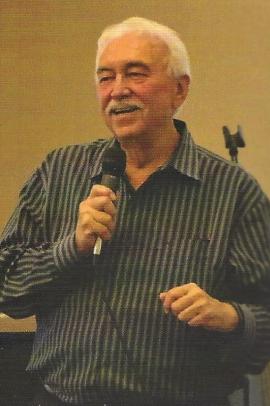Dr. Chavez is known for documenting the life experiences of Mexican and other immigrants in the Midwest. He has led an oral history collecting initiative for the Kansas City Museum and contributed to the Kansas City Urban Public Library‘s Digital Encyclopedia Project to create a Kansas City oral histories web portal. He collaborated with the Smithsonian National Museum of American History on ¡Pleibol! In the Barrios and the Big Leagues a bilingual journey into the heart of American baseball. He was a co-author of Mexican American Baseball in Kansas City.
Email: gtchavez45@gmail.com
-
Available Presentations (h3 text)
Available Presentations
Hispano Capitalista of the Santa Fe Trail, 1821-1900
In 1821, Missouri became a state, and 2021 marked the 200th anniversary of Missouri’s statehood, Kansas was still a territory. Both states played a role in developing commerce with Mexico. In that same year, Mexico became a nation having gained its independence from Spain. Mexico opened trade with the United States. Hispano and American entrepreneurs were ready and able to make the Santa Fe Trail a two-way international trade route and a conduit for cultural exchange between the two nations. This program will explore the role of Hispano capitalists who facilitated the success of the trail.
Vaqueros: The First Cowboys Who Made the Cattle Drives Successful
When Spanish settlers arrived in New Spain – later Mexico and the American Southwest – they brought with them the tradition of the Vaquero, a horse-mounted livestock herder that originated on the Iberian Peninsula of Europe. As American settlers moved west, they adopted the methods of the Vaqueros for managing large herds of cattle. In the 1800s, demand for beef grew and the cattle industry boomed. Massive cattle drives to railheads in towns like Sedalia, Missouri, Abilene, and Dodge City, Kansas required the unique skills of the Vaquero tradition. Wranglers of Hispanic, Black, American Indian, and White cowboys made the cattle industry of the mid-West a profitable enterprise. Eventually, much of the meat processing to place in Kansas City, Kansas, and the West Bottoms in Missouri. This presentation highlights the Vaquero culture, including the development of the corrido, a form of ballad popular among cowboys.
Program Underwriting
-
Program Underwriting
Each speaker can provide up to four presentations to underserved rural communities at no cost to the hosting institution. For the presentation to be covered by program underwriting, the host organization must be nonprofit and located outside Boone, Greene, Jackson, and St. Louis counties and outside the city of St. Louis.
For presentations that qualify for program underwriting, there is no cost to the host organization. The number of underwritten presentations this speaker has remaining is indicated below.
Requesting a Speaker
-
Requesting a Speaker
Contact the speaker directly to make arrangements.

